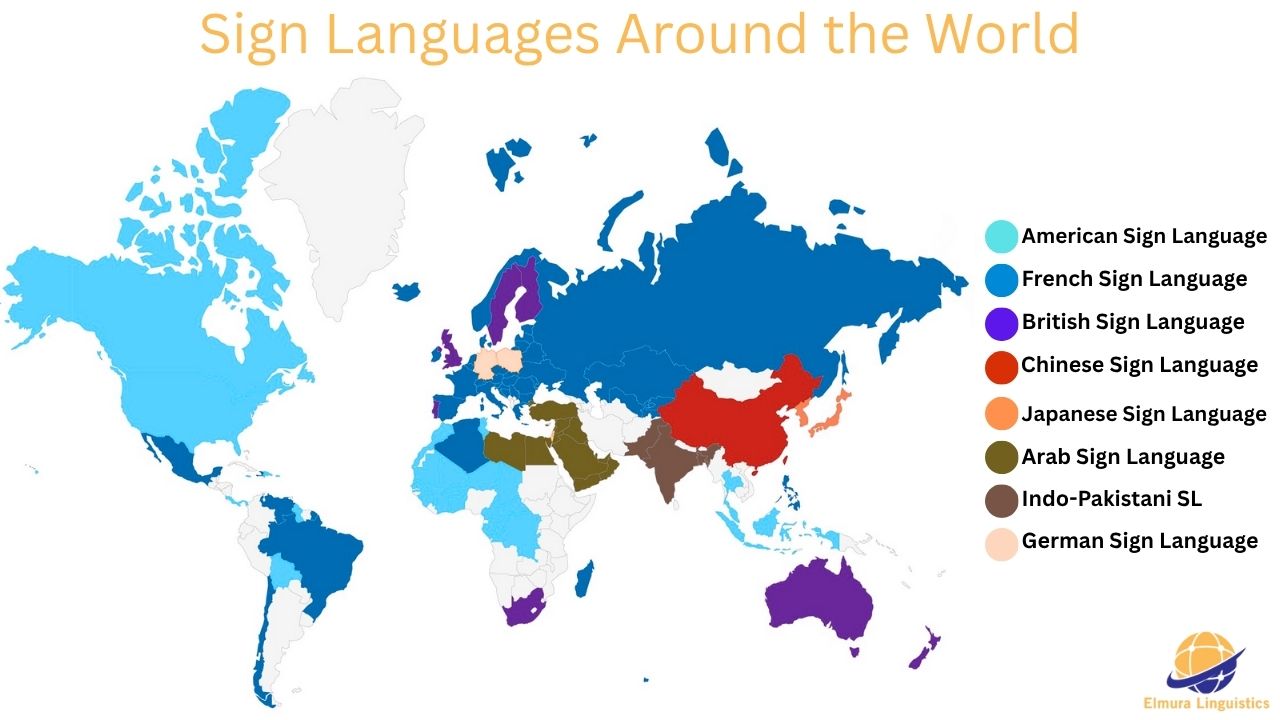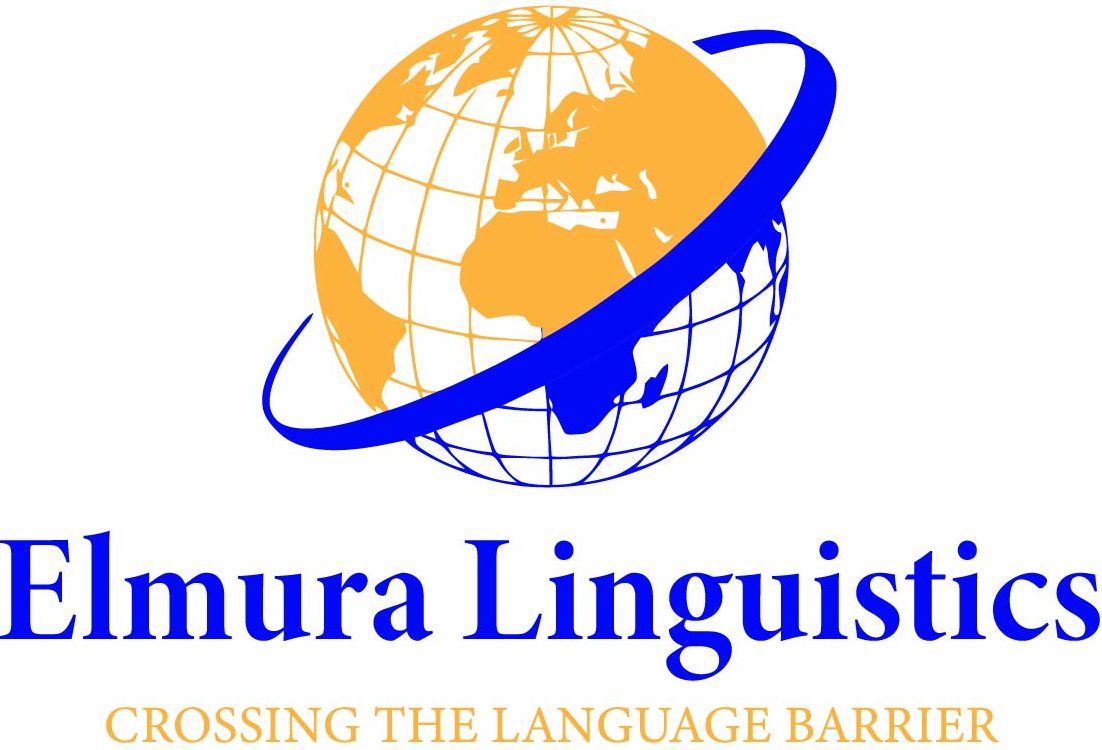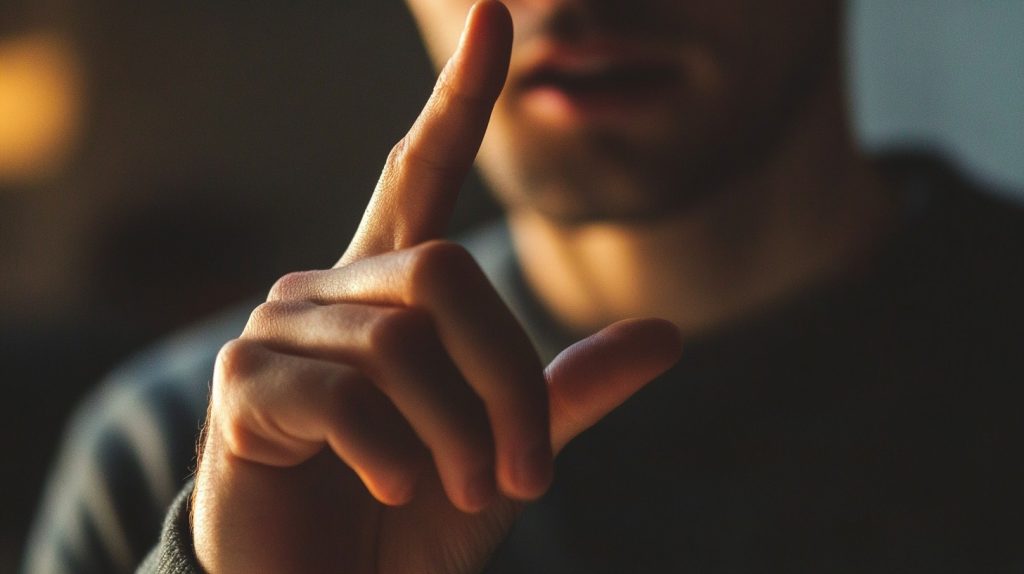Estimates of how many distinct sign languages exist vary because many are still undocumented. Scholarly catalogues list roughly 150–200+ languages with ISO or atlas entries, while international organizations often cite 200–300. In short: there are hundreds of distinct sign languages worldwide, but the exact number is uncertain.
And no, there isn’t a universal one.
Just like spoken languages, sign languages evolve within communities. From American Sign Language (ASL) to Chinese Sign Language (CSL) and dozens of lesser-known village types, each system has its own grammar, vocabulary, and identity. Surprisingly, even countries that share a spoken language often use entirely different sign languages.
Table of Contents
ToggleWhy There’s No Universal Sign Language

Unlike spoken languages that sometimes share common roots, sign languages develop independently within Deaf communities, shaped by local culture, geography, and history.
For example, American Sign Language (ASL) and British Sign Language (BSL) are completely different – not just in vocabulary, but in grammar and structure. Even countries that speak the same oral language often use entirely unrelated sign languages.
Efforts have been made to create a universal system, such as International Sign (IS), used in global events like the Deaflympics. However, IS is more of a simplified pidgin than a fully-developed language. It lacks the depth, nuance, and native speakers that natural sign languages possess.
The core reason there’s no universal sign language: they are real, living languages, not artificially imposed systems. They’re born in Deaf communities – not designed by committees – and evolve through daily use, just like spoken languages.
The Origins and Evolution of Modern Sign Languages

They didn’t emerge from spoken language – they developed naturally among Deaf communities, long before formal education systems began documenting them.
Two of the most influential early systems are:
- French Sign Language (LSF): Popularized in the 18th century by Charles-Michel de l’Épée, LSF became the foundation for American Sign Language (ASL) and influenced several others globally.
- British Sign Language (BSL): Dating back to the 16th century, BSL evolved its own manual alphabet and spread through the British Commonwealth, influencing Auslan (Australia) and NZSL (New Zealand).
But not all of these trace back to European roots. Many evolved independently, shaped by local Deaf communities.
Recent computational-linguistic work has begun to map historical relationships between sign languages using phylogenetic methods previously applied to spoken languages. A 2024 study used computational phylogenetics to compare several major sign languages and found evidence for broad, geographically-coherent groupings (for example, a European cluster and an Asian cluster), showing that some modern sign languages share ancestry or historical contact patterns. These results are new and still being expanded, but they mark an important step toward classifying sign-language families the same way linguists classify spoken-language families.
Major Sign Language Origins
| Sign Language | Origin/Influence | Current Use Regions |
| ASL (American) | Derived from French Sign Language (LSF) | USA, English-speaking Canada, parts of West Africa |
| BSL (British) | Indigenous development in UK | UK |
| Auslan/NZSL | Originated from BSL | Australia, New Zealand |
| LSF (French) | Indigenous to France | France, parts of Africa, historical root of many others |
| JSL (Japanese) | Indigenous, reflects oral Japanese | Japan |
| CSL (Chinese) | Independent development, language isolate | China |
| ISL (Irish) | LSF + local development | Ireland, Northern Ireland |
| Various regional Arabic-sign systems | Independent regional origins | Middle East and North Africa |
These languages didn’t come from one global standard – they grew out of community use, like any spoken language.
Note: lists of “major” sign languages are sensitive to documentation choices. For example, Ethnologue assigns ISO codes to roughly 150–160 sign languages, while the SIGN-HUB Atlas and other surveys list over 200 entries; international summaries often round to “~300” because they include regional varieties and underdocumented village systems.
Village vs. National Sign Languages: What’s the Difference?
National are used widely across a country and often taught in schools. Examples include American Sign Language (ASL) in the U.S. and British Sign Language (BSL) in the U.K. These languages are standardized, documented, and have recognized status in government and education systems.
Village sign languages, on the other hand, arise in small, often isolated communities where a high percentage of people are deaf. They’re used by both deaf and hearing members of the community and usually develop independently from national languages. Most are undocumented and passed on informally.
Linguists have recorded around 80 village sign languages, but estimate that hundreds more exist – many without formal recognition.
Key distinctions:
| Feature | National | Village |
| Usage Scope | National or regional | Single town or small community |
| Users | Primarily Deaf communities | Both Deaf and hearing members |
| Documentation | Often well-documented | Rarely documented |
| Educational Support | Taught in schools | Learned informally |
| Recognition | Often legally recognized | Typically unrecognized |
Village sign languages show that sign languages don’t require formal institutions to evolve – they emerge wherever there is consistent need for visual communication.
Dialects, Diversity, and Linguistic Richness Within Sign Languages

Just like spoken languages, sign languages have dialects, regional variants, and even social differences. Even within a single country, no sign language is completely uniform.
For example:
- In the UK, British Sign Language (BSL) users in Scotland and Southern England may use different signs for the same words.
- In Australia, some Auslan dialects include signs influenced by Indigenous Australian languages.
- In Ireland, male and female students were historically taught different signs in gender-segregated schools – creating gender-based dialects in Irish Sign Language (ISL).
These variations may include:
- Different signs for the same concept
- Unique signs influenced by local culture or minority languages
- Distinct grammar or expressions in specific regions
Despite these differences, signers often adapt quickly and find ways to understand each other, thanks to shared visual strategies and context cues. But mutual intelligibility isn’t guaranteed – what looks like a dialect may in fact be a separate language.
The existence of so much variation reinforces a core truth: they are full, dynamic languages shaped by the communities that use them.
Sign Language Rights and Global Recognition Today
View this post on Instagram
Many countries now legally recognise one or more national sign languages and international instruments (like the UN Convention on the Rights of Persons with Disabilities) explicitly support sign-language rights. However, recognition is uneven: hundreds of village or regional sign languages remain undocumented and lack legal support; country-by-country recognition is actively tracked by organizations such as the World Federation of the Deaf.
A major milestone came with the United Nations Convention on the Rights of Persons with Disabilities (CRPD). It mandates that sign languages be:
- Supported and promoted by governments
- Integrated into education systems
- Recognized as part of national linguistic identity
In 2017, the UN also established International Day of Sign Languages, observed annually on September 23. The day highlights the importance of:
- Early access to sign language
- Linguistic rights of Deaf people
- Cultural preservatio
Despite these advances, many of them still lack legal recognition, funding, and educational resources. Village and regional languages, in particular, remain underserved.
Promoting sign language access isn’t just about communication – it’s about equality, identity, and inclusion.
Supporting Communication Through Expert ASL and CDI Services

As they continue to gain recognition and adoption worldwide, access to qualified interpreters becomes even more essential – especially in legal, medical, and educational settings.
At Elmura Linguistics, we specialize in providing professional American Sign Language (ASL) and Certified Deaf Interpreter (CDI) services to ensure accurate, culturally responsive communication for Deaf and hard-of-hearing individuals.
Whether you’re hosting an event, navigating a legal matter, or creating accessible content – our ASL/CDI professionals are here to support full language equity and understanding.
Conclusion
There are 200-300 sign languages in use around the world – each with its own history, structure, and cultural identity. From widely recognized systems like ASL and BSL to undocumented village languages, they demonstrate the same complexity and diversity as spoken ones.
There is no universal sign language, and that’s not a flaw – it’s a reflection of how languages grow: naturally, within communities, shaped by real-life use. As global recognition improves, so does the importance of preserving, documenting, and supporting sign languages and the Deaf communities who use them.
Understanding this linguistic diversity is key to promoting inclusion, accessibility, and human rights – and it begins with awareness.





